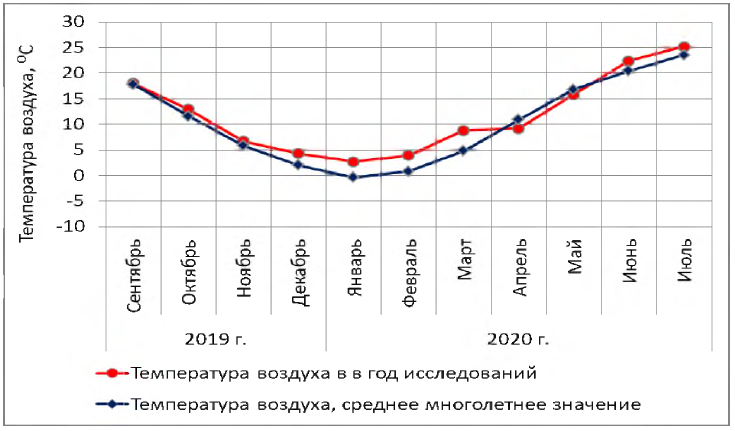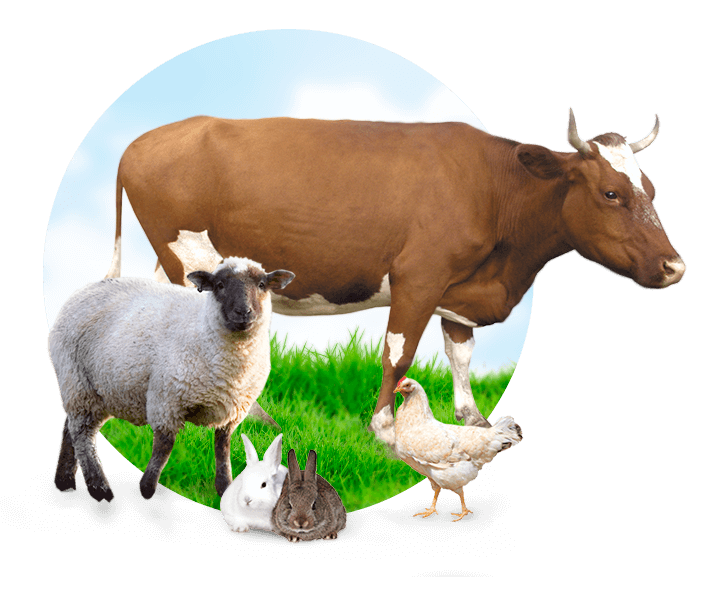

Field experience on the topic: “Study of the effectiveness of using ammophos produced by Kazphosphate LLC and other fertilizer manufacturers when sowing winter wheat in the Krasnodar Territory”.
Purpose of experiments. To conduct a comparative assessment of the effectiveness of using ammophos produced by Kazphosphate LLC and other manufacturing companies when sowing winter wheat of Ukrainka Odesskaya sort.
Research methodology: The experiments were carried out in the farm household – the Federal Rice Research Center, Krasnoarmeisky Rice-Growing Stud Farm named after A.I. Maistrenko (Krasnodar Territory). In terms of relief, the territory of the farm is a typical slightly undulating plain with a continuous gradient to the northwest towards the Sea of Azov. Most of the farming area as a result of the construction of the rice irrigation system is divided by a dense network of irrigation and discharge channels and is represented by the maps of rice growing areas with a pronounced microrelief (the difference in check marks reaches 20-30-50 cm and more).
The area of agricultural land is 11,439 hectares, including irrigated arable land – 9,641.5 hectares. Pastures and perennial plantations are located on the area of 230 and 419.7 ha, respectively. The farm household activity areas are growing of rice and well-developed meat and dairy cattle breeding. The structure of sown areas is dominated by grain crops – 75-80% and feeding crops – 18-24%. Most of arable lands are sown with grain crops and rice is grown on 50% of this large area. In addition to rice, the farm’s arable land is occupied by winter wheat (7.5%), grain maize (12.5%), annual (6.5%) and perennial (6.4%) grasses and other crops.
Climatic conditions: According to the scheme of agro-climatic zoning of the Krasnodar Territory, the territory of the experimental site is included in the 3rd agro-climatic region, which is characterized by a moderate continental climate.
Weather conditions during the study period: The year was exceptionally dry. Only in February, the amount of precipitation amounted to 127.5% of the norm, and in June – 101.5%. The precipitation deficit was 169.5 mm, i.e. 34%. During the period of young crops, the air temperature was 1.3 degrees higher than the average multi-year values, and the amount of precipitation was 2 times less than the average long-term annual values. Overwintering conditions for winter wheat were favorable.
Figure 1 – Air temperature during the growing season of winter wheat

Figure 2 – Amount of precipitation during the growing season of winter wheat

Technology of winter wheat cultivation.
- Optimal sowing dates are from the first of October up to the tenth of October. Seeding rates – 5 million viable seeds per 1 ha. The optimal seeding depth is 4-6 cm. The sowing method is ordinary with a row spacing of 15 cm.
- Fertilization. Nitrogen fertilizers are applied fractionally during critical periods of plant need for this nutrient (during sowing, during the tillering phase and the beginning of booting of wheat plants). Phosphorus and potash fertilizers are applied to the rows during sowing.
- Crop tending. An integrated system is used to protect winter wheat crops from pests, diseases, weeds: scientifically based crop rotations, chemical (pesticides), agrotechnical (tillage, sowing at optimal times, balanced and timely fertilization), sowing of resistant varieties.
- Harvesting. It is carried out in biologically justified terms for 10-12 days.
Table 1 – Agrochemical characteristics of soil in the experimental plot.
|
Depth, cm |
Humus, % |
PHh2o |
N-NO3 |
N-NH4 |
P2O5 |
K2O |
|
mg/kg |
||||||
|
0 20 |
2.9 |
6.5 |
15.0 |
11.7 |
48.0 |
198.1 |
The soil in the experimental plot is meadow-chernozemic heavy low humus heavy loamy soil.
Design of experiment included the following options:
- Control (without fertilizers)
- Farm household scheme (200 kg/ga – ammonium nitrate phosphate fertilizer 16-16-16)
- Ammophos (Manufacturer No. 1) – 150 kg/ga phys. m.
- Ammophos (Manufacturer No. 2) – 150 kg/ga phys. m.
- Ammophos (Kazphosphate LLC) - 150 kg/ga phys. m.
Plot area is 100 sq.m. Tier – 4-fold. The placement of varieties is randomized. When sowing, ammophos was applied, in the form of farming technology – ammonium nitrate phosphate fertilizer (16:16:16) in the amount of 200 kg/ha in physical weight (N32P32K32). Top dressing was carried out with ammonium nitrate. The first top dressing – when the vegetation is resumed in the tillering phase; the second – in the phase of the stem elongation. Agricultural technology in the experiment is generally accepted for the 3rd agro-climatic region of the Krasnodar Territory. Predecessor – fig.
Figure 3: Placement of experiment in space

According to the phases of vegetation on all plots of the experiment, soil and plant samples were taken to determine the content of nitrogen, phosphorus and potassium, as well as plant growth parameters. Harvesting was carried out in the phase of full grain ripeness by direct combining. The grain weight was recalculated for standard moisture content and purity.
Table 2: Winter wheat yield
|
Variant |
Yield, |
Increase |
|||
|
c/ha |
% |
c/ha |
% |
||
|
Control |
41.1 |
- |
- |
- 12.8 |
-23.7 |
|
Farm household scheme |
53.9 |
12.8 |
31.1 |
- |
- |
|
Ammophos (Manufacturer No. 1) |
54.6 |
13. 5 |
33.0 |
0.7 |
1.3 |
|
Ammophos (Manufacturer No. 2) |
53.8 |
12.7 |
31.0 |
-0.1 |
-0.2 |
|
Ammophos (Kazphosphate) |
54.3 |
13.2 |
32.0 |
0.4 |
0.7 |
|
НСР05 |
3.1 |
- |
- |
- |
- |
It has been established that when applying fertilizers, the yield is formed by 12.7-13.5 c/ha, i.e. by 30.9-32.8%, higher than in the control. Differences in the yield of varieties with fertilizers did not exceed 1.3%, i.e., were not significant.
The improvement in the provision of plants with nutrients was accompanied by an improvement in the yield quality. In the grain of winter wheat from fertilized agrocenoses, the content of fibrin increased by 6.7-7.0% compared to the unfertilized control, protein – 1.1-2.4%, hardness – 4.213,1%, IDK – 2.0-6.2 units, protein yield by 44.5-62.4%.
At the same time, the quality of grain from agrocenoses with the use of ammophos was significantly higher than with ammonium nitrate phosphate fertilizer, and there were no differences in the effect of ammophos on grain quality from different manufacturers. Noteworthy is the fact that ammophos produced by Kazphosphate LLC per active ingredient was less applied in comparison with the other two fertilizers, and no damage to either the crop or the grain quality was revealed, which is certainly important not only from an economic point of view, but also from an environmental point of view.
Table 3 – Quality of winter wheat grain
|
Variant |
Fibrin, |
Protein, |
Hardness, % |
FDM, |
Protein yield, |
Class |
|
Control |
17.1 |
10.8 |
41.0 |
40.1 |
443.9 |
4 |
|
Farm household scheme |
23.8 |
11.9 |
45.2 |
42.1 |
641.4 |
3 |
|
Ammophos (Manufacturer No. 1) |
24.1 |
13.2 |
53.2 |
46.3 |
720.7 |
3 |
|
Ammophos (Manufacturer No. 2) |
23.9 |
13.1 |
54.1 |
45.2 |
704.8 |
3 |
|
Ammophos (Kazphosphate) |
24.0 |
13.2 |
53.7 |
45.8 |
716.8 |
3 |
|
НСР05 |
- |
- |
- |
- |
38.7 |
- |
Thus, ammophos produced by Kazphosphate LLC and other manufacturing companies are highly effective fertilizers in terms of their effect on yield and grain quality, and with existing differences in the ratio and content of the main components in the composition, they do not differ in action.
Each kilogram of the active ingredient of the applied fertilizers contributes to the formation of 8.47-9.0 kg increase in grain yield. The highest payback of fertilizers was noted when using ammophos produced by Kazphosphate LLC and manufacturer No. 1.
Significant differences in the effect of ammophos by Kazphosphate LLC and other manufacturers, despite differences in the content of nutrients in fertilizers, on the feeding schedule of the meadow-chernozemic heavy low humus heavy loamy soil, the growth of winter wheat plants, the absorption of nitrogen, phosphorus and potassium by plants, the yield of wheat grain winter, has not been identified.
This fact may indicate a different availability of nutrients in fertilizers for plants, which deserves special attention from an economic and environmental point of view. An increase in the yield quality was noted



